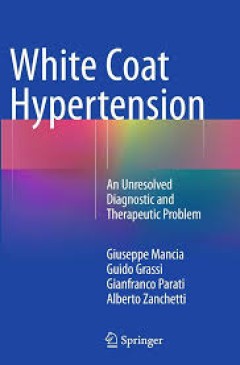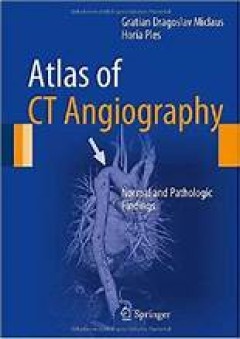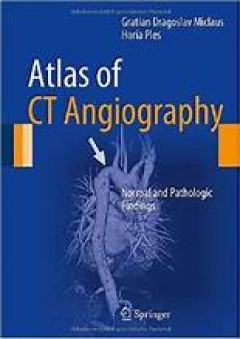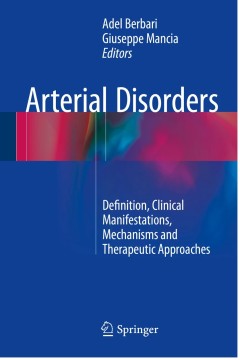Filter by

Evidence-based Positron Emission Tomography = Summary of Recent Meta-analyses…
This open access book summarizes the findings of recent evidence-based articles (meta-analyses) on the use of positron emission tomography (PET) for various clinical indications. It is divided into five main sections, starting with an introduction to PET and meta-analysis. In turn, the second part addresses evidence-based PET in oncology, providing a broad overview of its use for different type…
- Edition
- 1
- ISBN/ISSN
- 9783030477011
- Collation
- VIII, 143 ill; lamp
- Series Title
- -
- Call Number
- -

Molecular Mechanism of Congenital Heart Disease and Pulmonary Hypertension
This open access book focuses on the molecular mechanism of congenital heart disease and pulmonary hypertension, offering new insights into the development of pulmonary circulation and the ductus arteriosus. It describes in detail the molecular mechanisms involved in the development and morphogenesis of the heart, lungs and ductus arteriosus, covering a range of topics such as gene functions, g…
- Edition
- 1
- ISBN/ISSN
- 9789811511851
- Collation
- XIII, 405 hlm; ill., lamp.,
- Series Title
- -
- Call Number
- -

Non-Vitamin K Antagonist Oral Anticoagulants
This book is an essential guide to the medical treatment of thrombosis and presents core principles of anticoagulant therapeutics as well as drug recommendations. Written by recognized experts in the field, this concise, accessible handbook provides a unique and valuable resource in the cardiovascular field, both for those currently in training, and for those already in clinical or research pra…
- Edition
- 1
- ISBN/ISSN
- 978-3-319-25460-9
- Collation
- -
- Series Title
- -
- Call Number
- X, 50

IAEA Atlas of Cardiac PET/CT
This open access book presents a wide portfolio of examples of positron emission tomography coupled with computer tomography (PET/CT) studies in various cardiac conditions in order to provide a rationale for the implementation of this technology in an array of clinical conditions. Cardiovascular diseases are a major contributor to premature morbidity and mortality worldwide. Low- and middle…
- Edition
- 1
- ISBN/ISSN
- -
- Collation
- -
- Series Title
- -
- Call Number
- IX, 207

White Coat Hypertension An Unresolved Diagnostic and Therapeutic Problem
This book addresses all aspects of white coat hypertension – the phenomenon of raised blood pressure in a medical setting yet not elsewhere – from its history to its pathophysiology, diagnosis and treatment. White coat hypertension is a common condition, accounting for 30–40% of the overall hypertensive population. While many studies have addressed this condition, controversy still exists…
- Edition
- -
- ISBN/ISSN
- 978-3-319-07410-8
- Collation
- -
- Series Title
- -
- Call Number
- -

Vasovagal Syncope
This book is exceptional in being devoted solely to vasovagal syncope (VVS), the most frequent cause of transient loss of consciousness in the general population. All aspects of VVS are covered, including epidemiology, pathophysiology, diagnosis and differential diagnosis, prognosis, therapy and implications for particular activities such as work, driving and physical activity. The context for …
- Edition
- -
- ISBN/ISSN
- 978-3-319-09102-0
- Collation
- -
- Series Title
- -
- Call Number
- -

Atlas of CT Angiography
This atlas presents normal and pathologic findings observed on CT angiography with 3D reconstruction in a diverse range of clinical applications, including the imaging of cerebral, carotid, thoracic, coronary, abdominal and peripheral vessels. The superb illustrations display the excellent anatomic detail obtained with CT angiography and depict the precise location of affected structures and le…
- Edition
- 1
- ISBN/ISSN
- 978-3-319-05284-7
- Collation
- Atlas
- Series Title
- -
- Call Number
- 912

Atlas of CT Angiography
This atlas presents normal and pathologic findings observed on CT angiography with 3D reconstruction in a diverse range of clinical applications, including the imaging of cerebral, carotid, thoracic, coronary, abdominal and peripheral vessels. The superb illustrations display the excellent anatomic detail obtained with CT angiography and depict the precise location of affected structures and le…
- Edition
- 1
- ISBN/ISSN
- 978-3-319-05284-7
- Collation
- Kedokteran
- Series Title
- -
- Call Number
- 617

Assessment of Preclinical Organ Damage in Hypertension
This book presents up-to-date information on how to assess early preclinical alterations in the heart, the small and large arteries and the kidney using the most sensitive, specific and cost-effective techniques. A wide variety of techniques are discussed, with careful attention to the latest developments. For each organ, evidence is documented regarding the prevalence of organ damage in the ge…
- Edition
- Ed. 1
- ISBN/ISSN
- 978-3-319-15603-3
- Collation
- VIII, 218
- Series Title
- -
- Call Number
- 616.12 ASS a

Arterial Disorders: Definition, Clinical Manifestations, Mechanisms and Thera…
As our knowledge about arterial disease is greatly expanding, the aim of this book is to explore all aspects of arterial pathology, including classification, clinical manifestations, pathogenesis, and therapeutic options. The discussion of pathophysiologic mechanisms of arterial disease is wide ranging, encompassing hemodynamic, metabolic, humoral, inflammatory, genetic and environmental factor…
- Edition
- Ed. 1
- ISBN/ISSN
- 978-3-319-14556-3
- Collation
- IX, 431
- Series Title
- Arterial Disorders
- Call Number
- 616.12 ART a
 Computer Science, Information & General Works
Computer Science, Information & General Works  Philosophy & Psychology
Philosophy & Psychology  Religion
Religion  Social Sciences
Social Sciences  Language
Language  Pure Science
Pure Science  Applied Sciences
Applied Sciences  Art & Recreation
Art & Recreation  Literature
Literature  History & Geography
History & Geography